Info
Subfamily: Panicoideae
Genus etymology: Echinochloa = "hedgehog grass" [Greek] refering to the awned florets which are tightly arranged resembling a hedgehog
Species etymology: colonum = "of cultivated fields" [Latin] refering to the habitat
Photosynthetic type: C4 (warm season)
Nativity: naturalized - accidental
First recorded in Hawaiʻi: 1835
Map
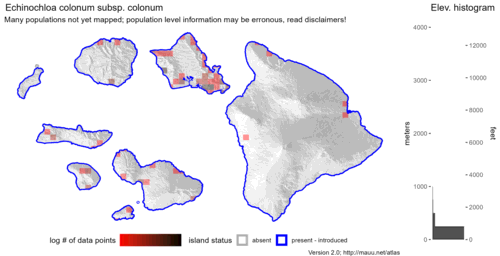

Inflorescence
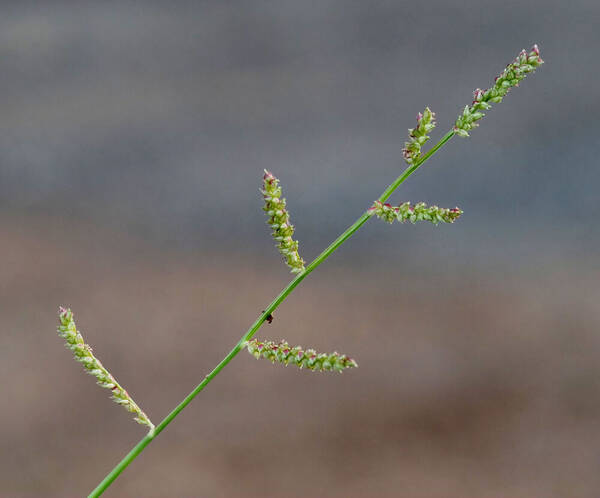
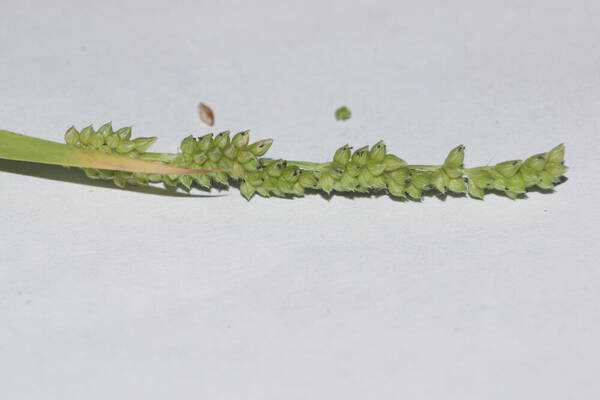
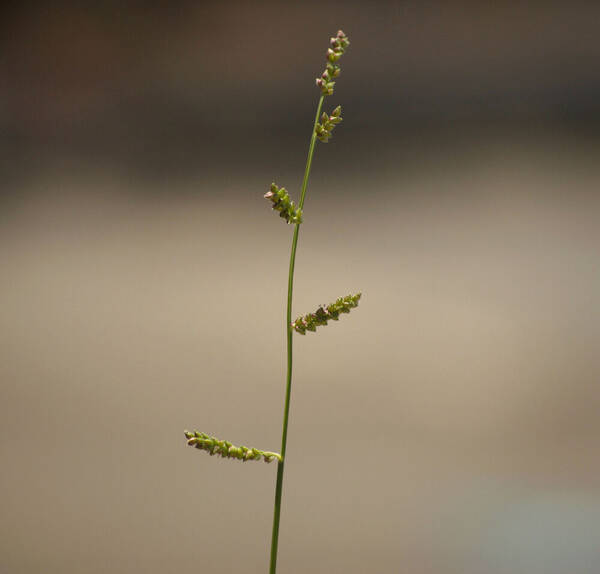
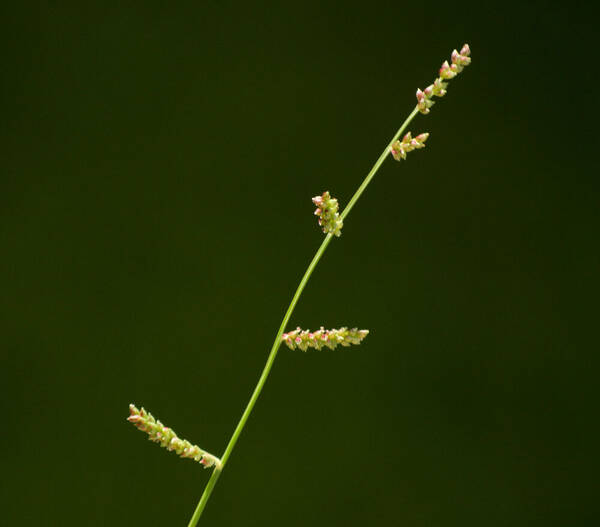
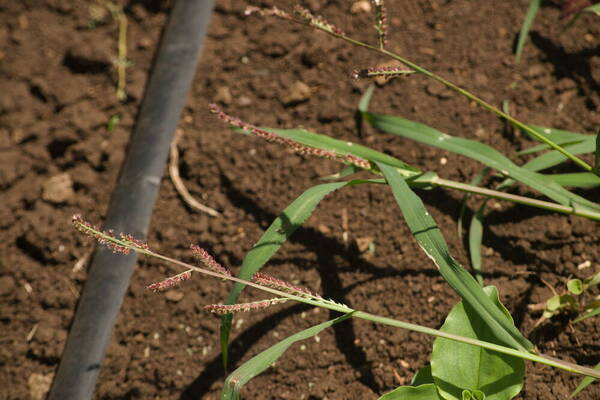
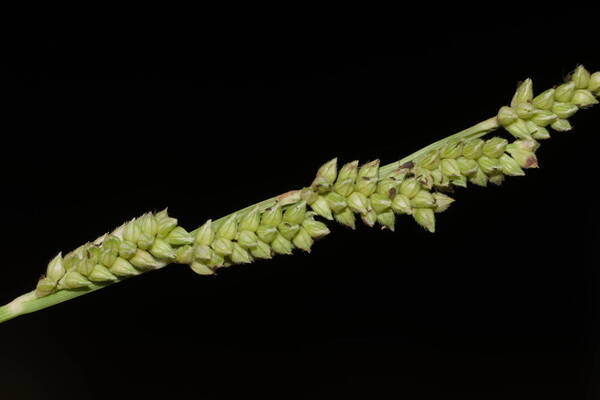
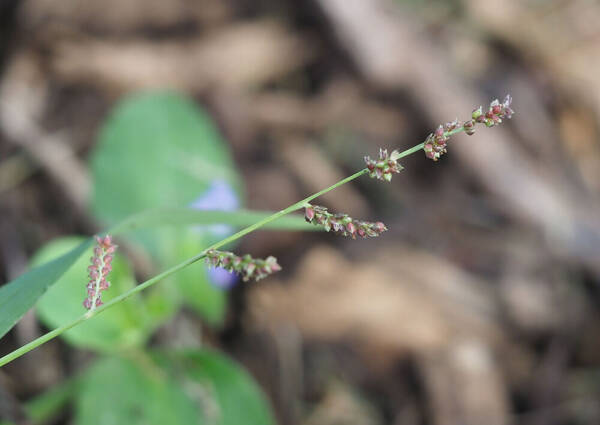
Plant
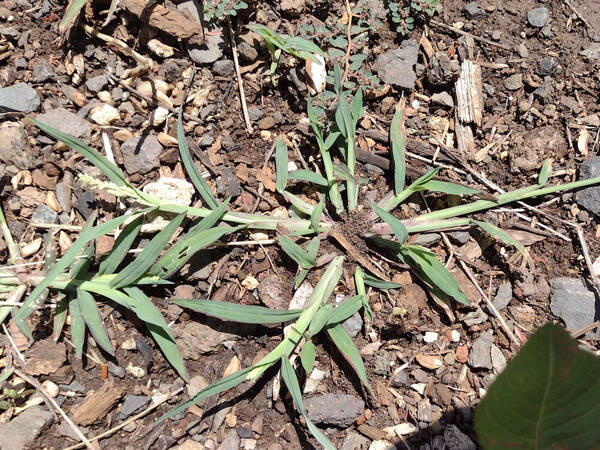
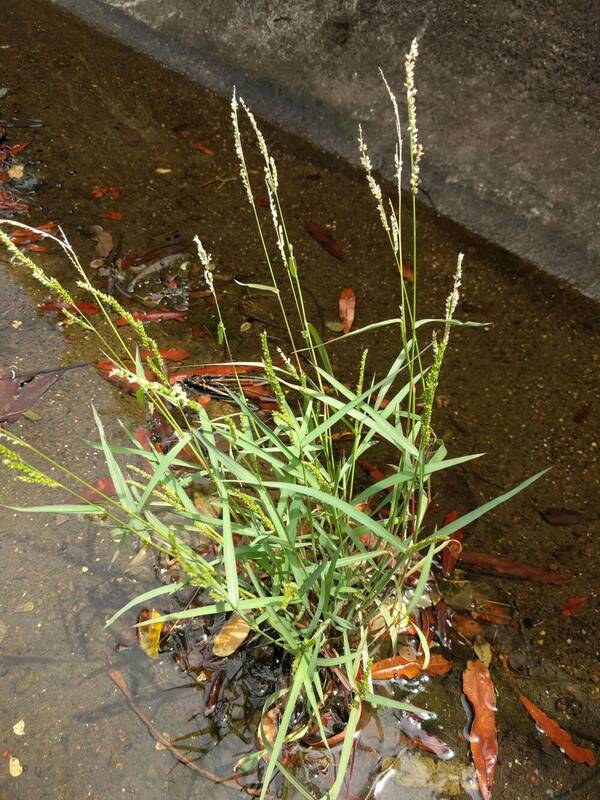
Habit
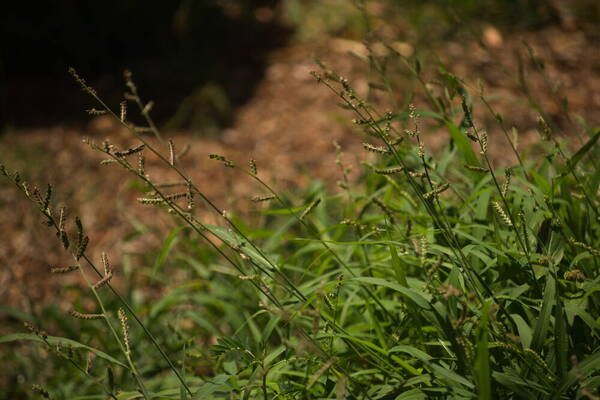
Spikelets

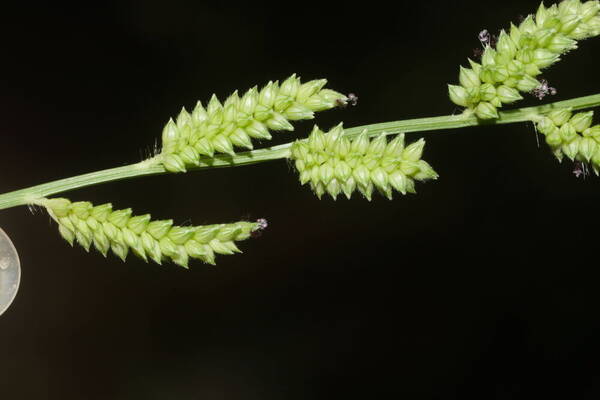
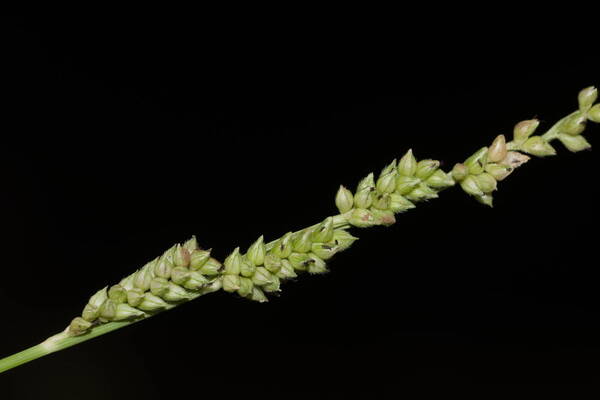
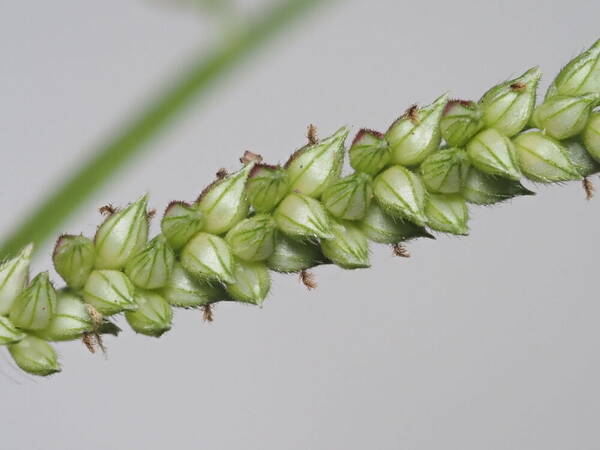
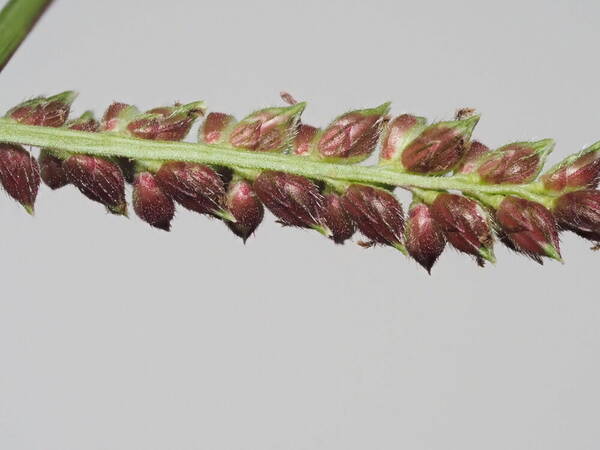
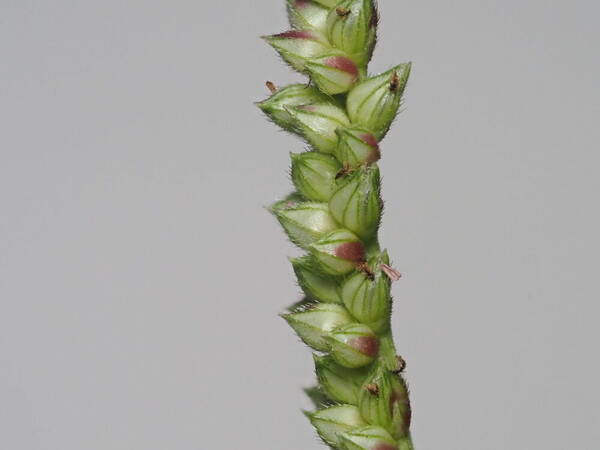
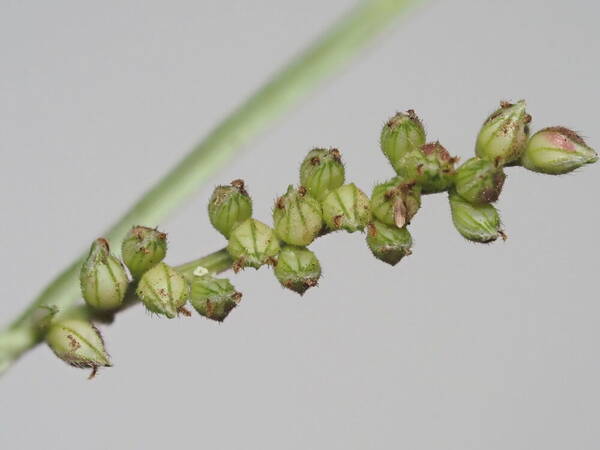
Description
Annual; culms 10–100 cm. high, erect or ascending. Leaf-blades 5–30 cm. long, 2–8 mm. wide, occasionally marked with purple bars; ligule absent; sheaths glabrous. Inflorescence typically linear, 1–15 cm. long, the racemes neatly 4-rowed, seldom over 3 cm. long, simple, commonly ± 1/2 their length apart and appressed to the axis but sometimes subverticillate and spreading (rarely congested). Spikelets ovate-elliptic to subglobose, 1.5–3 mm. long, pubescent; lower floret ♂ or barren, acute to cuspidate (rarely with a subulate point up to 1 mm. long); upper lemma 2–3 mm. long. Fig. 134.
(Description source: Clayton, W.D. & Renvoize, S.A. 1982. Flora of Tropical East Africa. Gramineae (Part 3). A.A. Balkema, Rotterdam. 448 pp. )
Annual. Culms 10–150 cm. high, erect or ascending; ligule absent. Inflorescence 1–20 cm. long, typically linear; racemes up to 3 (rarely 5) cm. long, neatly 4-rowed, simple commonly c. 1/2 their length apart and appressed to the axis but sometimes subverticillate and spreading, rarely congested. Spikelets 1.5–3(3.5) mm. long, subglobose to ovate-elliptic, pubescent to hispidulous, often purple tinged. Inferior floret male or barren, its lemma acute to cuspidate (rarely mucronate). Superior lemma 2–3 mm. long.
(Description source: Launert, E. & Pope, G.V. (eds.). 1989. Flora Zambesiaca. Volume 10. Part 3. Kew, London. 152 pp. )
Plants annual; erect or decumbent, cespitose or spreading, rooting from the lower cauline nodes. Culms 10-70 cm; lower nodes glabrous or hispid, hairs appressed; upper nodes glabrous. Sheaths glabrous; ligules absent, ligule region frequently brown-purple; blades 8-22 cm long, 3-6(10) mm wide, mostly glabrous, sometimes hispid, hairs papillose-based on or near the margins. Panicles 2-12 cm, erect, rachises glabrous or sparsely hispid; primary branches 5-10, 0.7-2(4) cm, erect to ascending, spikelike, somewhat distant, without secondary branches, axes glabrous or sparsely hispid, hairs 1.5-2.5 mm, papillose-based. Spikelets 2-3 mm, disarticulating at maturity, pubescent to hispid, hairs usually not papillose-based, tips acute to cuspidate. Lower glumes about 1/2 as long as the spikelets; upper glumes about as long as the spikelets; lower florets usually sterile, occasionally staminate; lower lemmas unawned, similar to the upper glumes; lower paleas subequal to the lemmas; upper lemmas 2.6-2.9 mm, not or scarcely exceeding the upper glumes, elliptic, coriaceous portion rounded distally, passing abruptly into a sharply differentiated, membranous, soon-withering tip; anthers 0.7-0.8 mm. Caryopses 1.2-1.6 mm, whitish; embryos 63-83% as long as the caryopses. 2n = 54.
(Description source: Barkworth, M.E., Capels, K.M., Long, S. & Piep, M.B. (eds.) 2003. Flora of North America, north of Mexico. Volume 25. Magnoliophyta: Commelinidae (in part): Poaceae, Part 2. Oxford University Press, New York. 783 pp http://floranorthamerica.org/Echinochloa_colona )
Annuals; culms tufted, usually reddish purple, erect, ascending or decumbent at base, sometimes rooting at lower nodes, 20-60 cm tall, sometimes nodes conspicuously swollen and usually geniculate, compressed, lower internodes often exposed. Sheaths 3-7 cm long, compressed, keeled, glabrous; ligule absent; blades green or sometimes with transverse purple bands, flat, 4-10 cm long, 3-8 mm wide, often undulate, margins occasionally scabrous, apex acute. Inflorescences paniculate, usually 5-10(-15) cm long, green or purple tinged, racemes several, 1-2 cm long, the lower ones up to 1 cm apart, the upper ones crowded, rachis scaberulous, pedicels short, scaberulous; spikelets crowded, usually in ca. 4 rows, (1.5-)2.5-3 mm long, acute to cuspidate, rarely with a subulate point up to 1 mm long; glumes ovate, hispidulous, apex acute, first glume 1.2-1.5 mm long, 3-nerved, second glume 2.5-3 mm long, 7-nerved; first lemma similar to second glume, first palea ovate, ca. 2 mm long, glabrous; second lemma broadly ovate, ca. 2 mm long, glossy. Caryopsis whitish, broadly ovate, 1.7-2 mm long, flat on one side. [2m = 30, 36, 48, 52, 54, 56, 72, 96, 108, 130]
(Description source: O’Connor, P.J. 1990. Poaceae, pp. 1481–1604. In: Wagner W.L., Herbst D.R. & Sohmer S.H. (eds.)., Manual of the flowering plant of Hawaiʻi. Vol. 2. University of Hawaii Press & Bishop Museum Press, Honolulu )